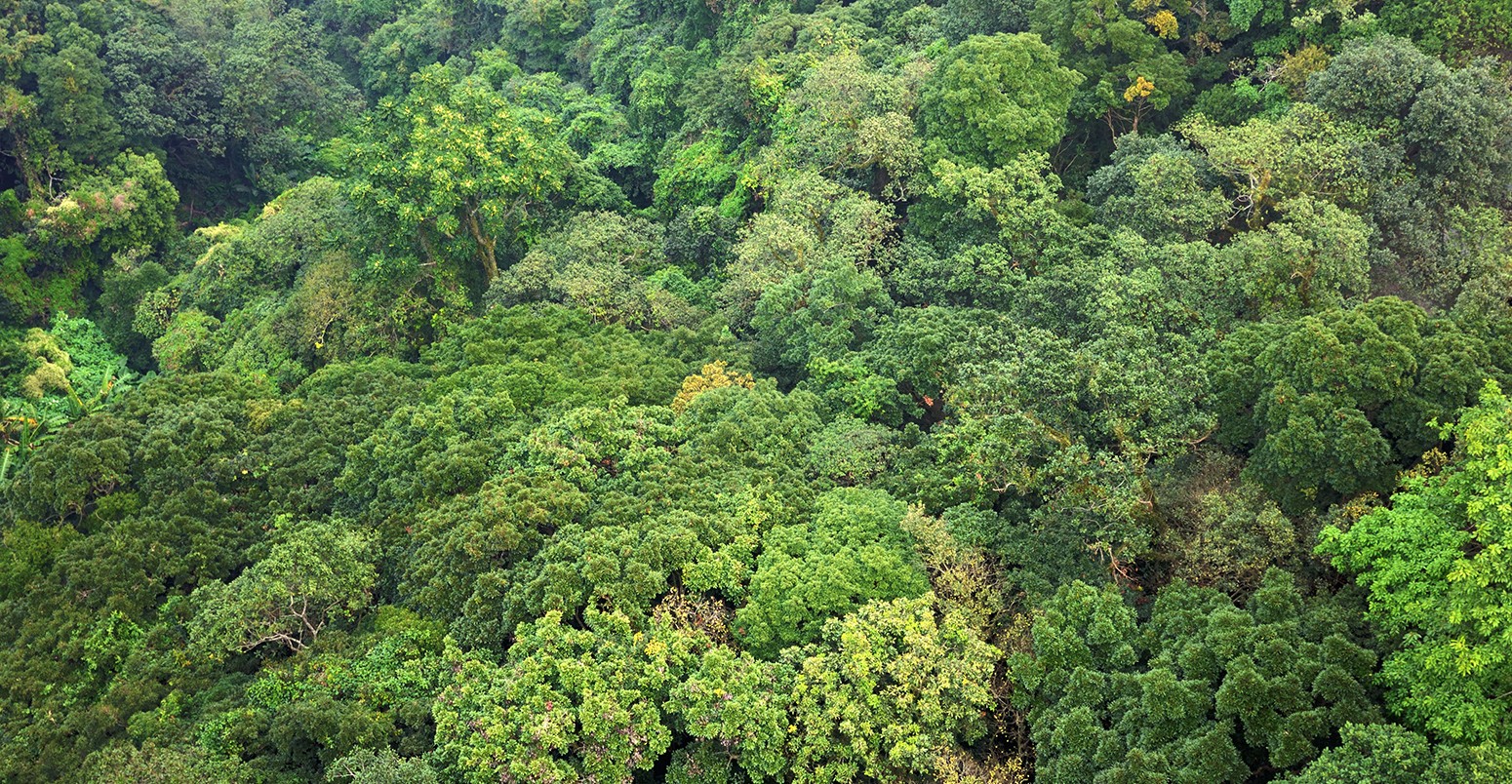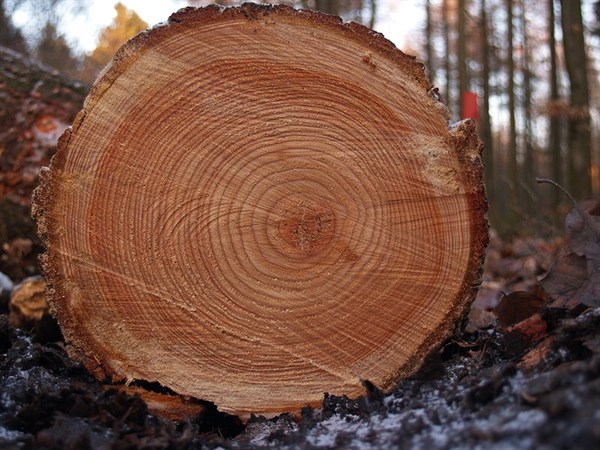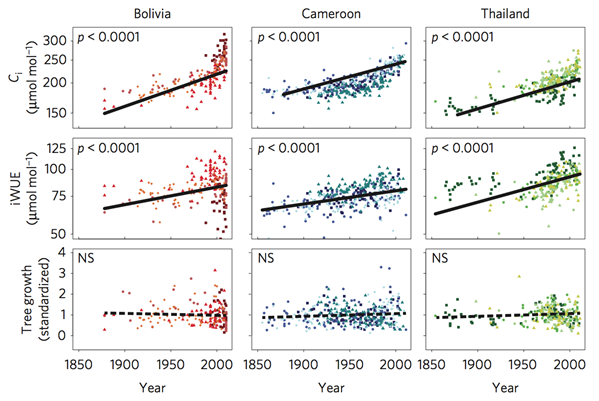
New paper raises question of tropical forest carbon storage
Robert McSweeney
12.15.14Robert McSweeney
15.12.2014 | 4:00pmThe world’s forests provide a huge carbon sink, absorbing around a third of manmade carbon emissions, and helping to moderate global temperature rise.
A new study argues that the speed of tree growth in tropical rainforests isn’t keeping pace with rising carbon dioxide levels in the atmosphere, and so it may be “too optimistic” to expect this buffering effect to keep pace with rising emissions.
But another scientist tells us the finding needs to be examined carefully, and it could be difficulties in taking measurements in tropical rainforests that are leading to the result.
Rainforests are an important carbon store
As part of the Earth’s natural carbon cycle, vast amounts of carbon dioxide are taken out of the atmosphere and absorbed by the land each year. Tropical rainforests, the extremely productive forest ecosystems found gathered around the equator, are responsible for much of that exchange.
Through photosynthesis, trees convert carbon dioxide, water and sunlight into the fuel they need to grow, locking up carbon in their trunks and branches in the process.
Experiments scientists have carried out in temperate forests and greenhouses suggest that when there’s more carbon dioxide in the air, trees can grow more quickly because their photosynthesis rate speeds up. This process is called ‘carbon dioxide fertilisation’.
Scientists expect that as manmade carbon dioxide emissions increase, forests will absorb and store more carbon.
But a new study, published in Nature Geoscience, suggests that tropical rainforests might not be absorbing more carbon as emissions rise. Despite a 35 per cent increase in atmospheric carbon dioxide over the last 150 years, the study suggests that trees in the tropics aren’t growing any quicker.
Studying tree rings
The researchers studied over a thousand trees of different ages, covering 12 different species and three different parts of the tropics. They chose areas of old-growth forests in Thailand, Cameroon and Bolivia that were undisturbed by deforestation or human settlements.
They analysed tall ‘canopy’ trees, which are the most common type in tropical forests and typically reach around 30 metres in height, and also smaller ‘understorey’ trees that grow to around 10 metres tall.
Examining tree rings can show how quickly a tree has grown from year to year. As a tree grows, it puts on extra layers of wood around its trunk, creating a new ring each year. The more a tree has grows in a year, the more wood it adds, and the wider the tree ring is.
Tree rings. Source: Creative Commons 2.5: Arnoldius
More efficient water use but no extra growth
The figure below shows the results for the trees sampled in this study, plotted against the year the tree started growing.
The upward trend shown in the top line of charts shows that trees’ leaves have been processing more carbon dioxide over the past 150 years. The middle line of charts show water use efficiency increasing as well.
Charts showing carbon dioxide concentration in leaves (top), intrinsic water use efficiency (middle) and tree growth (bottom) in canopy trees for all three countries over the past 150 years. Solid black lines show trends that cannot be ruled out by chance, while dotted lines show trends that can. NB, results for understorey trees are similar (not shown). Source: van der Sleen et al. (2014).
So, consistent with previous research, the study finds that trees can use water more efficiently when there’s more carbon dioxide in the air, which makes their rate of photosynthesis increase.
However, the study didn’t find any evidence that the trees actually grow more as well, shown in the bottom line of charts. In other words, additional carbon dioxide allowed the trees to make more fuel, but this didn’t make their trunks any wider.
The findings were the same for all species of trees and all three countries they sampled. And the results are surprising, lead author Dr Peter van der Sleen tells us:
“…the positive effects of elevated carbon dioxide on plant growth are well established experimentally and theoretically. However, our study suggests that in the field, other factors than carbon or water are limiting tropical tree growth. Such a factor could be the availability of nutrients in the soil.”
Difficult to measure
The findings suggest that carbon dioxide fertilisation isn’t giving tree growth in tropical rainforests the boost that scientists expect. But there are reasons to interpret the result cautiously.
Dr Simon Lewis of University College London and the University of Leeds, an expert in tropical rainforests, tells us the result might be due to the difficulties in measuring long-term changes in tree growth.
The complication, Lewis says, is that of the trees standing a hundred and fifty years ago, not all will have survived to the present day. So the study is comparing young trees with the old trees that were best-adapted to survive – and may have been particularly fast growing.
Lewis says:
“I think that’s the primary driver for why they’re not seeing an increase in growth, when we’d expect one from the increasing water use efficiency.”
To do a like-with-like comparison, trees that have reached maturity today would need to be compared with only the younger trees that are most likely to still be standing a hundred years into the future, probably the fastest growing ones in the best places.
It doesn’t help that there aren’t many other studies like this one, Lewis says. “There is an absence of this particular type of evidence,” he says, “because it’s really expensive and really quite difficult to do.”
Building understanding
There are other theories for why the study finds no extra tree growth. It could be the fertilisation effect is boosting growth in other ways, an accompanying News & Views article suggests. So instead of making trees grow faster, carbon dioxide fertilisation could result in a greater number of trees, or more growth in young saplings that the study didn’t sample.
It’s also possible that a difference could be seen in tree height, Dr Lewis suggests:
“[The trees] may be able to grow taller for a given diameter under higher carbon dioxide, and you wouldn’t see that from tree rings. But you would see higher biomass for a given tree.”
Although scientists haven’t quite got to the bottom of what’s happening in the tropics, these debates add to the body of literature and should help build scientists’ understanding of the mechanisms that could be at play.
Either way, forests are still going to play an important part in storing our rising carbon emissions. As co-author Dr Pieter Zuidema puts it:
“Even if old growth forests are not mitigating carbon emissions, regrowing forests and restored forests will nonetheless be very effective in increasing carbon sequestration in tropical regions.”
Main image: Aerial view of rainforest canopy in Guatemala, Central America. Credit: soft_light/Shutterstock.com.
van der Sleen, P. et al. (2014) No growth stimulation of tropical trees by 150 years of CO2 fertilisation but water-use efficiency increased, Nature Geoscience, http://nature.com/articles/doi:10.1038/ngeo2313 & Cernusak, L.A. (2014) Tropical languor, Nature Geoscience, http://nature.com/articles/doi:10.1038/ngeo2328



